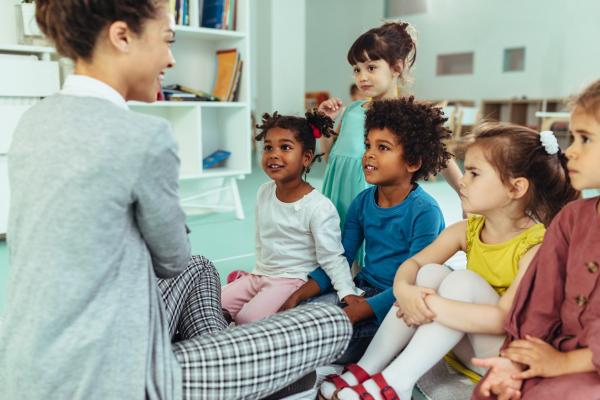
New measurement study will focus on the social-emotional learning of young children
In July, with funding from the U.S. Department of Education’s Institute of Education Sciences (IES), a team of researchers from the UNC Frank Porter Graham Child Development Institute (FPG) launched a measurement study focused on the social-emotional learning of young children. The project is designed to establish the psychometric qualities of the Teacher Impression Scale (TIS), a practitioner-administered assessment of preschool children's peer-related social competence. Led by FPG Senior Research Scientist Samuel L. Odom, PhD, the project team includes FPG Senior Research Scientist Ann Sam, PhD, and FPG Advanced Research Scientist Ximena Franco-Jenkins, PhD, and Faculty Fellows Stephanie S. Reszka, PhD, and Brianne Tomaszewski, PhD.
The TIS is a 16-item observer rating scale whose ratings are based on three, 5-minute observations of preschool children engaging in social interaction with their peers. Teachers or other practitioners will observe a child for a 5-minute sample during a free-play time in their classroom and complete the scale immediately after the observation. The assessment is designed to collect, in a teacher friendly way, information about preschool children's peer-related social competence.
Peer-related social competence is fundamental for children’s later development. Particularly for children who have had limited interaction with peers and adults due to COVID, this observer rating scale will give teachers a way of systematically assessing the capabilities and competence of children as they engage their peers in social interactions and play. Teachers will be able to use this in classrooms to document the strengths that many children possess in peer social competence, identify children in their classes who may need more support for being socially engaged with their peers, and monitor progress when additional support is provided to those children.
While Odom and colleagues developed a similar teacher impression scale 30 years ago, which had been used in Europe by child development scientists, the FPG team is restandardizing it for use in the United States. Researchers are using a racial equity lens to ensure that the tool is a culturally appropriate assessment that reflects the social competence of children from different races, ethnicities, and cultural groups. To this end, the first part of the research project includes focus groups that will provide feedback on the cultural appropriateness of the items being assessed, among other topics. The first phase also focuses on validating the content of the measure and developing the software for data collection.
“We focus on making sure that our tools are practical and useful for teachers, which is why it is important that we have these focus groups so that the end product is a measure that can be successfully used by teachers,” says Sam.
The FPG team is examining students’ language differences and how that plays out in terms of peer social competence, so some focus groups will be tailored for Spanish speaking family members. In addition, the researchers will be proactive about adapting the measure for Spanish speaking teachers who will use the tool in their observations.
Throughout the study, 210 teachers in early learning classrooms and 740 preschool children will participate. The teachers and children—who will range in age from 3 to 5 years old—will be racially, ethnically, linguistically, and culturally diverse and not have or be at risk for an identified developmental disability.
During phase one, the team will do a set of pilot observations to obtain feedback to further modify and shape the instrument. The second phase of the project will include large-scale data collection from many early childhood programs in North Carolina and California. In California, the partner programs are Head Start centers and California state pre-K programs in the vicinity of San Diego and Imperial Valley while North Carolina is partnering with Head Start centers and NC pre-k programs, including some associated with school districts. This second phase also includes modifying the TIS and evaluating its usability.
In Phase 3, the researchers will include more focused studies on how the TIS could be used as an aid to identify or verify a teacher’s impression about which children need more support in learning early social emotional skills. The tool can also be used as a progress monitoring tool for when support strategies are put in place for some children. At the end of the project, a fully developed, psychometrically verified, and practical assessment of preschool children's peer social competence, suitable for scaling up for program use, will be available—free of charge—to early childhood programs and practitioners.
“This tool will be able to verify the strong skill set some children have and also identify the children who need more support with social emotional learning,” says Odom. “We hope that the TIS will be developed into an instrument that's easy for teachers to use in their classroom and produces useful information that teachers can use in planning their programs.”
